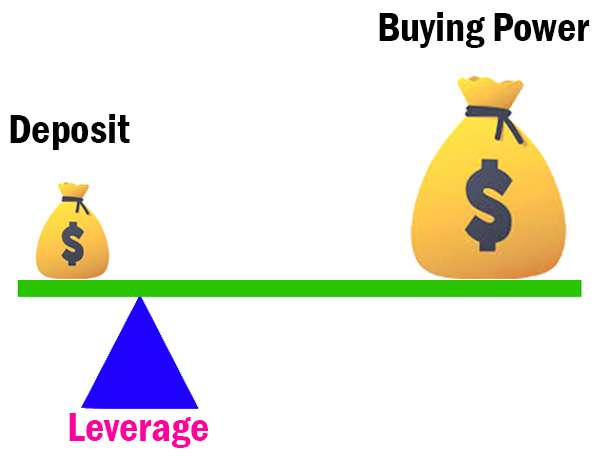What is Leverage in Forex
What is Leverage in Forex?: The leverage in forex trading is the virtual credit that the broker provides to the trader. Leverage gives you the advantage of getting a higher return from a small investment. Before using leverage, we should always remember the risks. The higher the leverage ratio, the higher the risk, so understanding risk management is the most important. Therefore, in Forex trading, leverage can be your friends and enemies, depending on how you understand the strengths and weaknesses of leverage and how to use leverage properly.
![What is Leverage in Forex]() What is Leverage in Forex Trading
What is Leverage in Forex Trading
Leverage is a useful financial tool that allows us to hold larger potions with smaller investments. Leverage enables a larger number of transactions to be held through small deposits. This means that in foreign exchange trading, traders can enter a currency position worth $100,000, which only costs $1,000 in a 1:100 leverage ratio.
For example, to control a position of $100,000, you only need to deposit $1,000 from your trading account.
How Leverage works
Some of the leverage levels offered by Forex Brokers are 1:25, 1:50, 1:100, 1:200, 1:300, 1:500 and 1:1000. If we have a leverage of 1:500, then our initial margin will be 500 times smaller than the contract size. Here’s an example of how leverage works: Suppose a trader’s trading capital is $1,000 and trades at 1:500 leverage. According to his leverage, his trading capital has increased by 500 times, which means he has 500,000 (1,000 x 500) to trade with.
For example, the current exchange rate for the EUR/USD pair is 1.1150, and we want to open 1 lot position (100,000 units). If our leverage is 1:500, then the margin required for such orders will be $100,000 / 500 = $200. If the trader wants to open a mini lot position (10,000 units), then such options are required margin will be 10,000 / 500 = $20.

 What is Leverage in Forex Trading
What is Leverage in Forex Trading